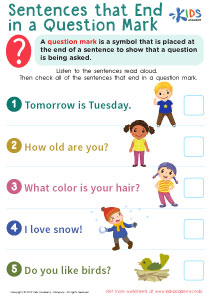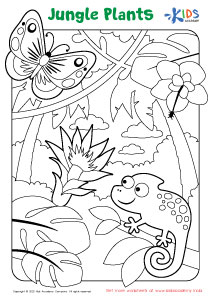K.CC.A.2 Counting and Cardinality worksheets With Answers for Kindergarten
8 filtered results
-
From - To
Explore our engaging K.CC.A.2 Counting and Cardinality worksheets designed specifically for kindergarten students! These worksheets support young learners in developing essential counting skills and understanding the relationship between numbers and quantities. Each printable provides a variety of fun exercises that encourage number recognition and one-to-one correspondence. With answer keys included, teachers and parents can easily track progress and provide targeted assistance. Perfect for reinforcing classroom learning or supplementing at-home study, our resources make math enjoyable and accessible. Empower your child’s numerical skills today with our comprehensive K.CC.A.2 worksheets that lay the foundation for mathematical success!


Counting In The Neighborhood Part 2 Worksheet


Peter Pan Worksheet


Counting Forward On the Farm Worksheet


Counting in the Neighborhood Part1 Worksheet


Check. Checkmate or Stalemate? Worksheet


Sidewalk Counting Worksheet


What Is a Stalemate? Worksheet


Find Stalemate! Worksheet
K.CC.A.2 is a key standard in the Counting and Cardinality domain for kindergarten that focuses on understanding the relationship between numbers and quantities. This standard emphasizes recognizing that each successive number in a counting sequence represents a quantity that is one greater than the previous number. Teaching this concept lays a foundation for mathematical reasoning and critical thinking in young learners.
Parents and teachers should care about K.CC.A.2 because it enhances children’s ability to develop early math skills essential for future academic success. Proficiency in counting and understanding cardinality fosters problem-solving abilities and equips students to tackle more complex math concepts later on, such as addition and subtraction.
Additionally, K.CC.A.2 not only supports cognitive development but also promotes confidence in students as they gain competency in number recognition and counting. Engaging activities related to this standard can foster a positive learning environment and strengthen the parent-child bond when practiced at home.
Ultimately, investing time in teaching and reinforcing K.CC.A.2 plays a crucial role in preparing children for more advanced mathematical concepts, ensuring they build a solid foundation for lifelong learning. By focusing on this standard, we could nurture a generation that is comfortable, competent, and confident in their mathematical abilities.
 Assign to My Students
Assign to My Students




.jpg)










